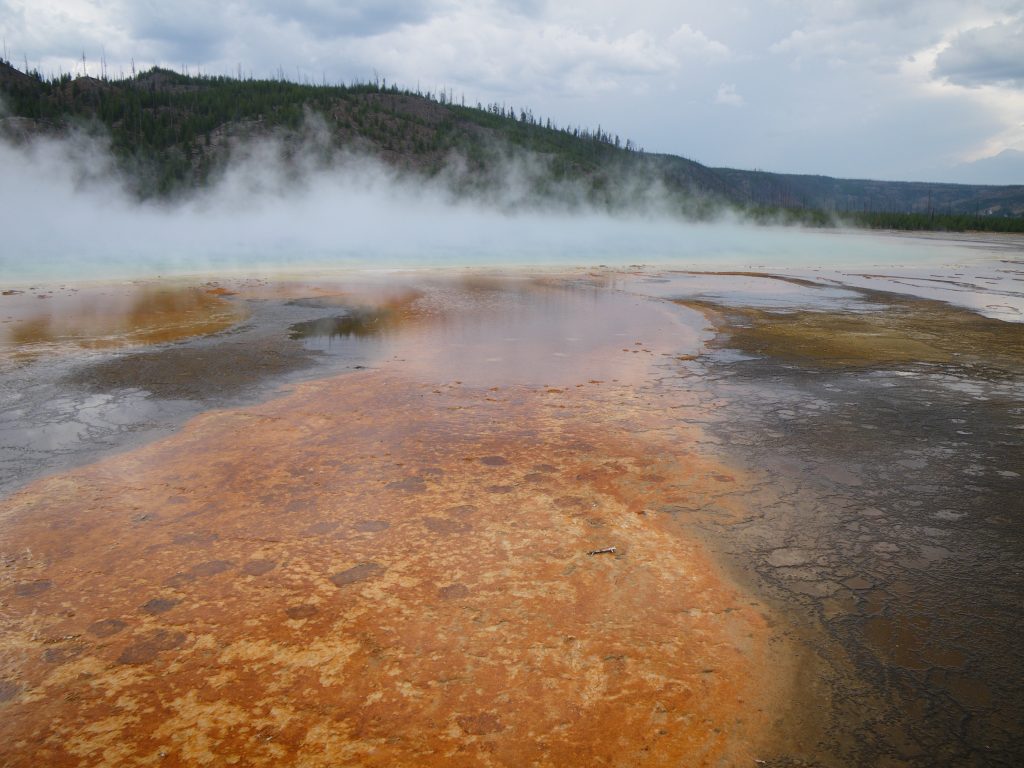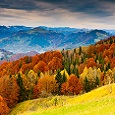Don’t bother taking a dip in Searles Lake, California. In fact, it’s a stretch to call this wet spot in the Mojave Desert a lake at all. For starters, there’s not much water, mostly just salt-crusted ooze. The ooze smells like a combination of rotten eggs, decaying fish, and old cheese. It has a pH of 9.8—about the same as bleach. To top things off, the ooze in Searles Lake contains ultra-high levels of arsenic: 29,000 times what is considered safe in drinking water. Even the salt content is nasty: 10 times the salt content of ocean water.
Amazingly, something actually lives in Searle Lake’s caustic ooze: a type of bacteria called SLAR-1. Ron Oremland, a geomicrobiologist (studies the intersection of geology and microscopic life) with the US Geological Survey in Menlo Park, California, discovered it by chance, when he scooped up some of the ooze on a whim and took a peek under the microscope. SLAR-1, he later determined, survives by “breathing” arsenic.
SLAR-1 may be alone in Searle’s Lake. But it belongs to a whole class of organisms that live under extremely improbable conditions. These life forms are called extremophiles.
Extremophiles live where no other life can, under conditions generally considered fatal by the rest of us. They are typically microscopic organisms such as bacteria. Take, for example, the sci-fi sounding “Strain 121.” This iron-slurping microbe holds the world’s “hottest habitat” record. Discovered in 2003, it thrives at 121 degrees Celsius (250 degrees Fahrenheit), on a volcanic vent on the bottom of the Pacific Ocean.
Yellowstone’s hot springs get their color from extremophiles like metallosphaera, which uses iron for energy and can live in conditions that are not only extremely hot, but also so acidic they approach battery acid. Yellowstone’s extremophiles were some of the first ones discovered and studied.
At the other end of the temperature spectrum is the bacteria found living in a frigid, briny lake trapped under 60 feet of Antarctic ice. No light. No oxygen. Temperature of 8 degrees Fahrenheit. Ron Oremland told me that he thinks his Searles lake extremophile holds a special place among these extra-special organisms, because it survives under such a variety of typically fatal conditions: extreme arsenic content, extreme salinity, extreme pH. He calls SLAR-1 a “poly-extremophile.”
Whether they thrive with a multitude lethal conditions, or just one, I find extremophiles fascinating. First, there is the “wow” factor. But in a larger context, extremophiles provide thought a provoking challenge of the notion of life as we know it. For example, since some can live without oxygen or light, they may give us a glimpse into the earliest life on Earth, back when our home sweet home was not quite so sweet.
But perhaps even more intriguing is the notion of extremophiles as aliens. After all, if extremophiles can live in Earth’s most hostile environments, why not other places in our solar system?
In fact, NASA scientists spend a lot of time thinking about extremophiles. Could extremophiles persist on Mars, where there is strong evidence that water once flowed across the planet’s surface? Or Jupiter’s icy moon Europa, where it seems there may be an ocean under the moon’s frozen white surface. And maybe, just maybe, our idea of normal “life” needs some re-thinking. I like this quote from NASA expert Richard Hoover: “If these organisms could talk, many of them would probably consider humans as extremophiles because they aren’t killed by all this “toxic” oxygen that we breathe every instant!”
Activity: The Hunt for Extremophiles
Have students select an extreme environment on Earth, like Yellowstone, sea floor volcanic vents, Antarctica, or one of the candidate solar system bodies such as Enceladus, Mars, Earth’s moon, or Europa.
Then using resources from research institutes such as NASA, Jet Propulsion Lab, or USGS, explore the known conditions of that environment – oxygen, temperature, pH, etc.
Finally, have students select one or two of those conditions and explore using resources below or others if there is a known extremophile that lives under similar conditions. What are its main survival strategies (e.g. respiring arsenic)?
Some extremophile resources:
Chat with NASA expert Richard Hoover, lots of great questions and answers: http://www.nasa.gov/connect/chat/extreme_chat.html
Overview and examples from NSF: http://www.nsf.gov/news/special_reports/sfs/index.jsp?id=life&sid=ext
World’s hottest: http://www.genomenewsnetwork.org/articles/08_03/hottest.shtml
Antarctica: http://www.livescience.com/25032-ancient-antarctic-microbes-found.html).
Yellowstone, from the National Park Service: http://eu.montana.edu/pdf/outreach/ScienceoftheSprings.pdf
Seckbach, J., Oren, A., and Stan-Lotter, H. 2013 (editors). Polyextremophiles – Life under multiple forms of stress. Springer, Dordrecht, Germany.
Special thanks to Ron Oremland for his correspondence with me!








